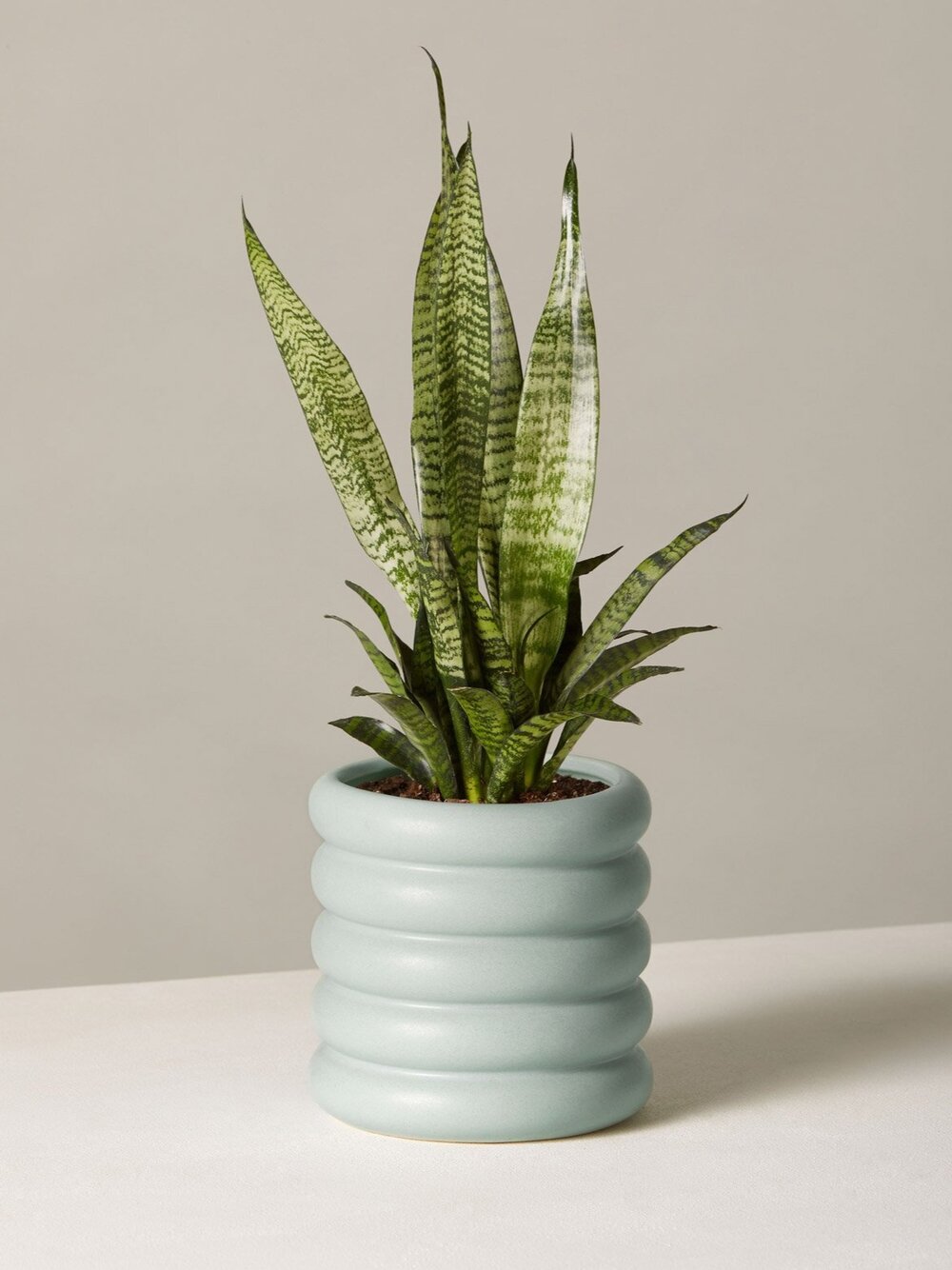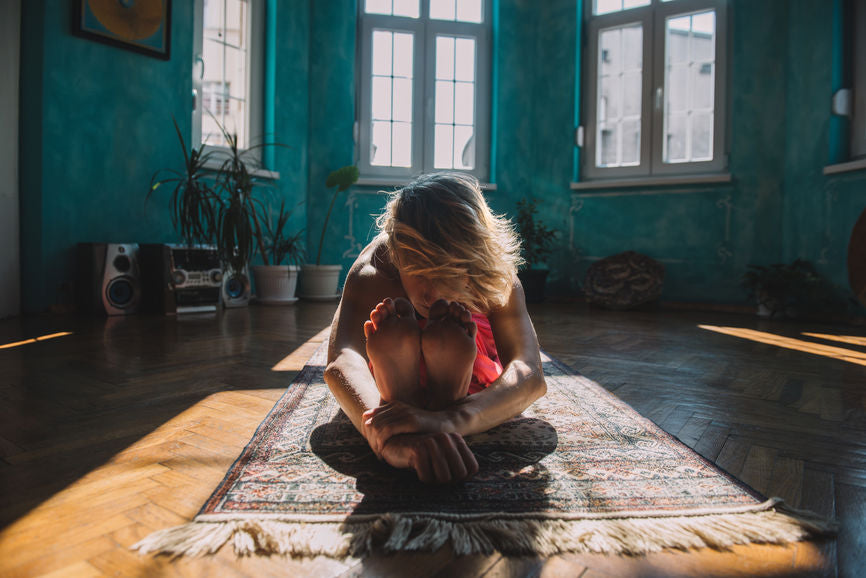
Meditation is proven to reduce stress, relieve anxiety, enhance self-awareness, focus, and mental health so having a space dedicated to just that is incredibly helpful. However, most people don’t have the foresight to purchase a home or apartment with a meditation room in mind.
There is a ton of advice on the internet about how to create a meditation room but what they often forget is that you have space constraints to work around. So, images of serene meditation rooms with floor to ceiling windows are great, but we want to be practical and help you make use of the space you have available. In this article we’ve covered finding a practical space for your meditation room, the supplies to put in it and then some simple decor advice to complete your vision.
Finding Space for Your Meditation Room
According to the National Apartment Association, since 2006 apartment square footage in the United States has been shrinking. The average size has decreased by 8% in the last ten years, naturally driven by shrinking square footage in densely populated cities. What that means is, it’s ever-important to understand the many ways you can get all-purpose usage out of your space to fit your changing needs.
We’ve discussed apartment gyms in the past along this same vein, but today we’re going to focus solely on creating a gorgeous and serene meditation room by working with the space you’ve got. Let’s discuss ways you can find space for your meditation room or area with the square footage you’ve got.
Make Your Meditation Space Sacred
Many meditation practitioners prefer to dedicate a full room to meditation for privacy and energy maintenance. If your home is a high-traffic one, you may not want many people having access to your meditation room and potentially disrupting the energy balance you’ve created. So, if a dedicated room is possible in your home, take advantage of it.
Leverage Corner Space
You don't need a lot of space to create a serene area for practicing meditation. Ideally, if you have enough space to sit, lay, and potentially stretch, that is plenty. You may not have much square footage to dedicate, you certainly have many many corners.

INSTAGRAM/herzenstimme
Take advantage of your corners. In small spaces and apartments, corners end up being really valuable space for storage and decor. If you don’t have a separate room that you can dedicate at least 50% of the space to your meditation area and supplies then find a free corner near a window. Decorate your corner with plants, pillows, scents, and other meditation supplies.

INSTAGRAM/@cfunk44
Try to Find a Window
Natural sunlight is your source of vitamin D, it’s mood-boosting and it’s relaxing. Also, if you have a pretty good view, looking out of the window before or after your meditation and observing the clouds and trees, etc. can be helpful to your mood.
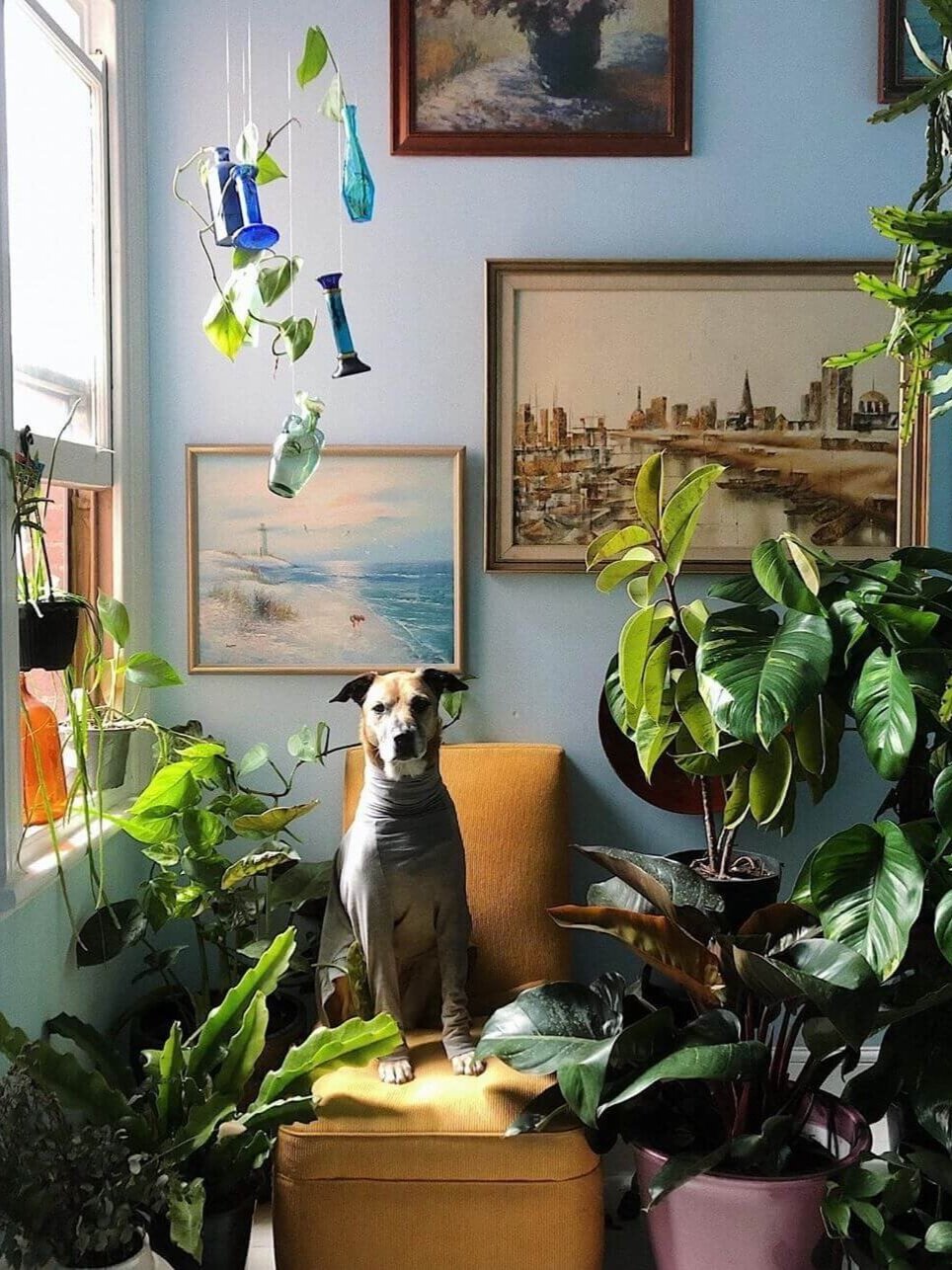
INSTAGRAM/@PlantMama
Consider Sharing Space
You can create a meditation area in any room. My office doubles as my meditation room and it works out because this happens to be a room that has some extra space for me to work with. Additionally, it’s also a space that people avoid traipsing around in. For some reason, and I’m not complaining but people really respect my office and will ask permission before entering. So, combining your office with your meditation space could check your privacy box.

INSTAGRAM/@tatjanas_world_
Next, creating a meditation space in your office can improve your work experience. Because my meditation space always smells amazing, has candles burning, and a fountain running, my office gets to benefit from the ambiance as well. As a result, I’m more at ease during conference calls and I overall feel happier working from home.
Repurpose a Closet
If you don’t have a free corner available and can’t share a space consider using closet space. If you have a walk-in closet or a closet large enough for a small table for candles, journals, and singing bowls it can make for an excellent meditation area. If you’re like me, you have at least one closet that’s just for storage. That’s the closet you should pick for your small meditation room.
Go through your storage closet to see what you can get rid of. If you haven’t used most of the items in a full calendar year, you probably don’t need them. Toss out whatever you don’t need and start building your sacred space in the closet. The closet ticks off so many boxes because in one fell swoop your meditation space is made both private and convenient.
Personalize Your Meditation Room
The most zen meditation rooms are those that appeal to the practitioner’s personality. As you’re designing your meditation room, infuse your personality into every element from the meditation chairs, and meditation pillows to other decor pieces like meditation books.
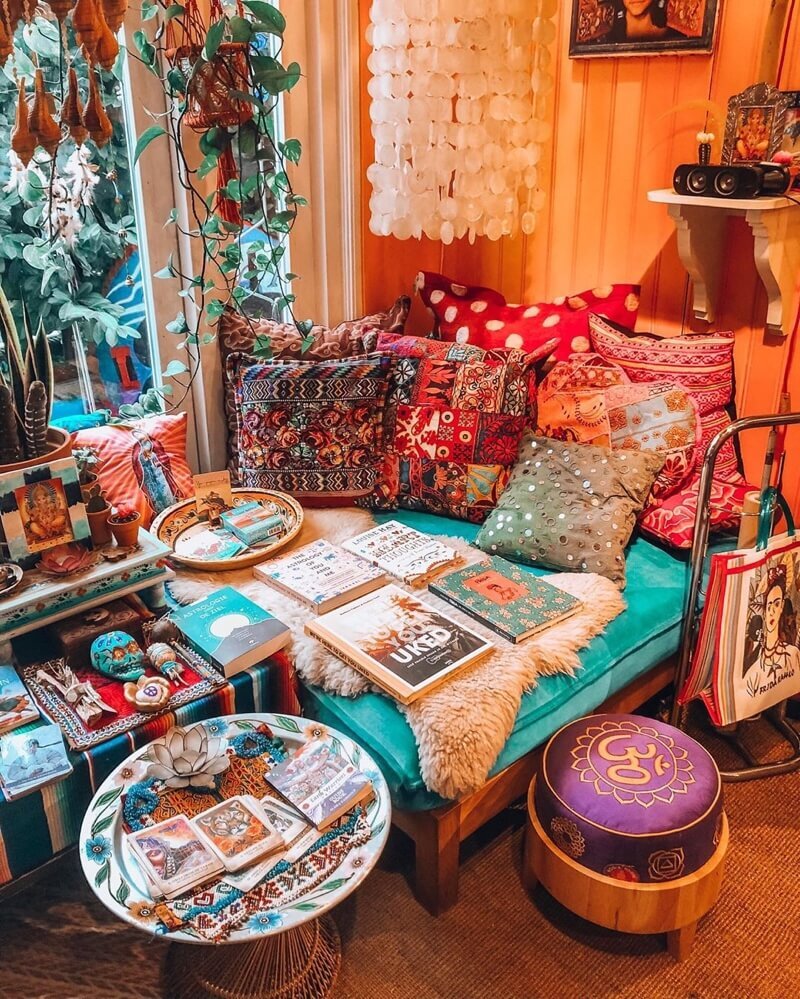
INSTAGRAM/ @thebohemianhouseofcolor
Incorporate Nature
Bring nature into your meditation room by adding plants, rocks, and twigs. Use rooms or areas that have direct access to sunlight. Bring in natural elements like feathers, fish or birds and consider bringing in running water in the form of a decorative fountain.

INSTAGRAM/ @homebyfaith
Be Guided by Your Senses
Allow your senses to help you decide what to include in your room. What scents relax you? What fabrics are relaxing? Me, personally, I burn Cashmere Plum scented candles in my space because the scent is incredibly comforting. Additionally, if I want to limit my light source, the flicker from the candle gives the room an auburn hue and watching the shadow of the flame on the wall is incredibly relaxing. Meditation is an exploration of you. And, your meditation room is a reflection of your personal needs. So, think about sensory elements that your body can interact with.
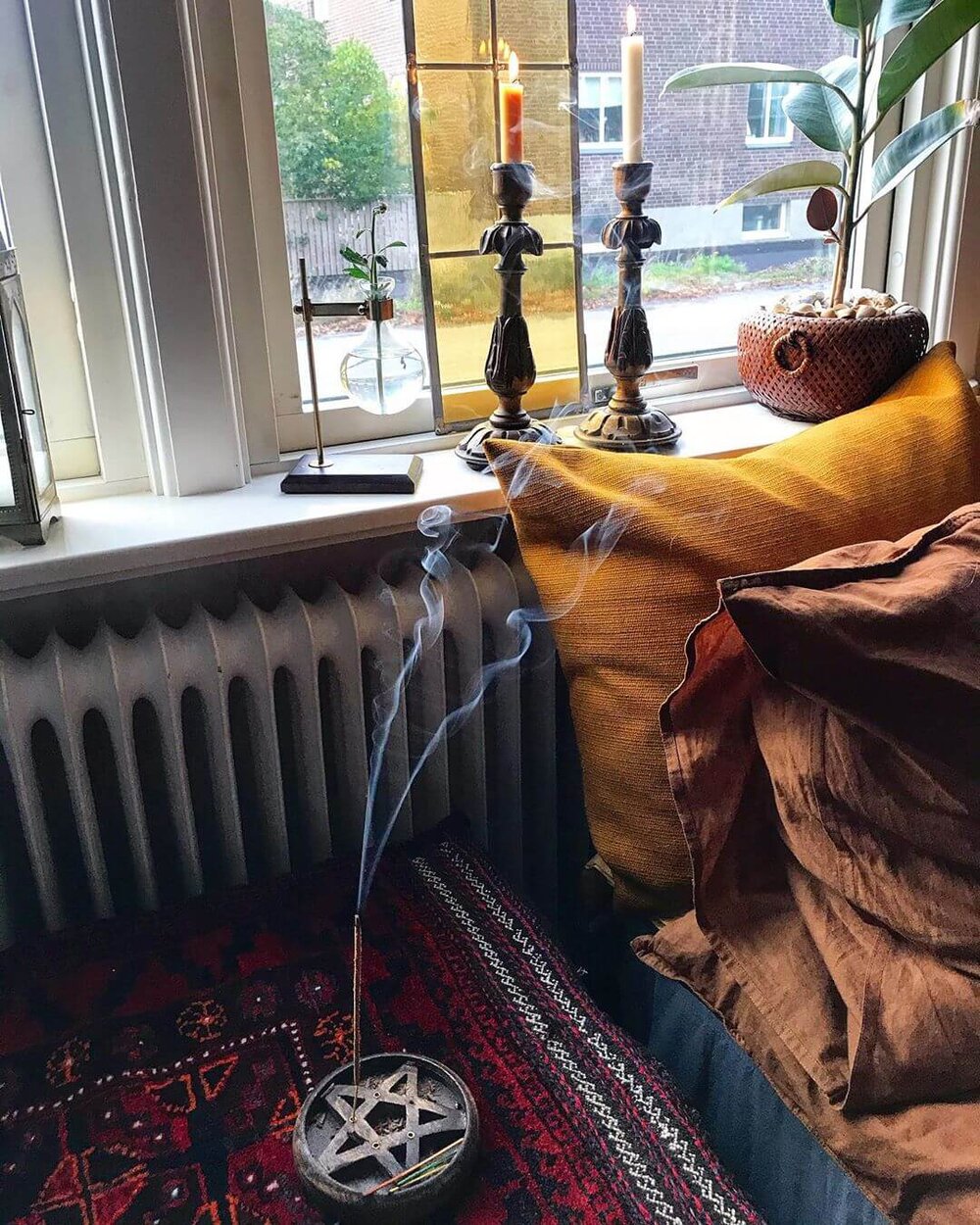
INSTAGRAM/ @ istyleithappy
Bring Sounds Into Your Meditation Room
If you prefer music or guided meditations have your iPad or tablet queued up with soothing music. Your cell phone isn’t the best idea for an audio device because the opportunity for distraction is so great.
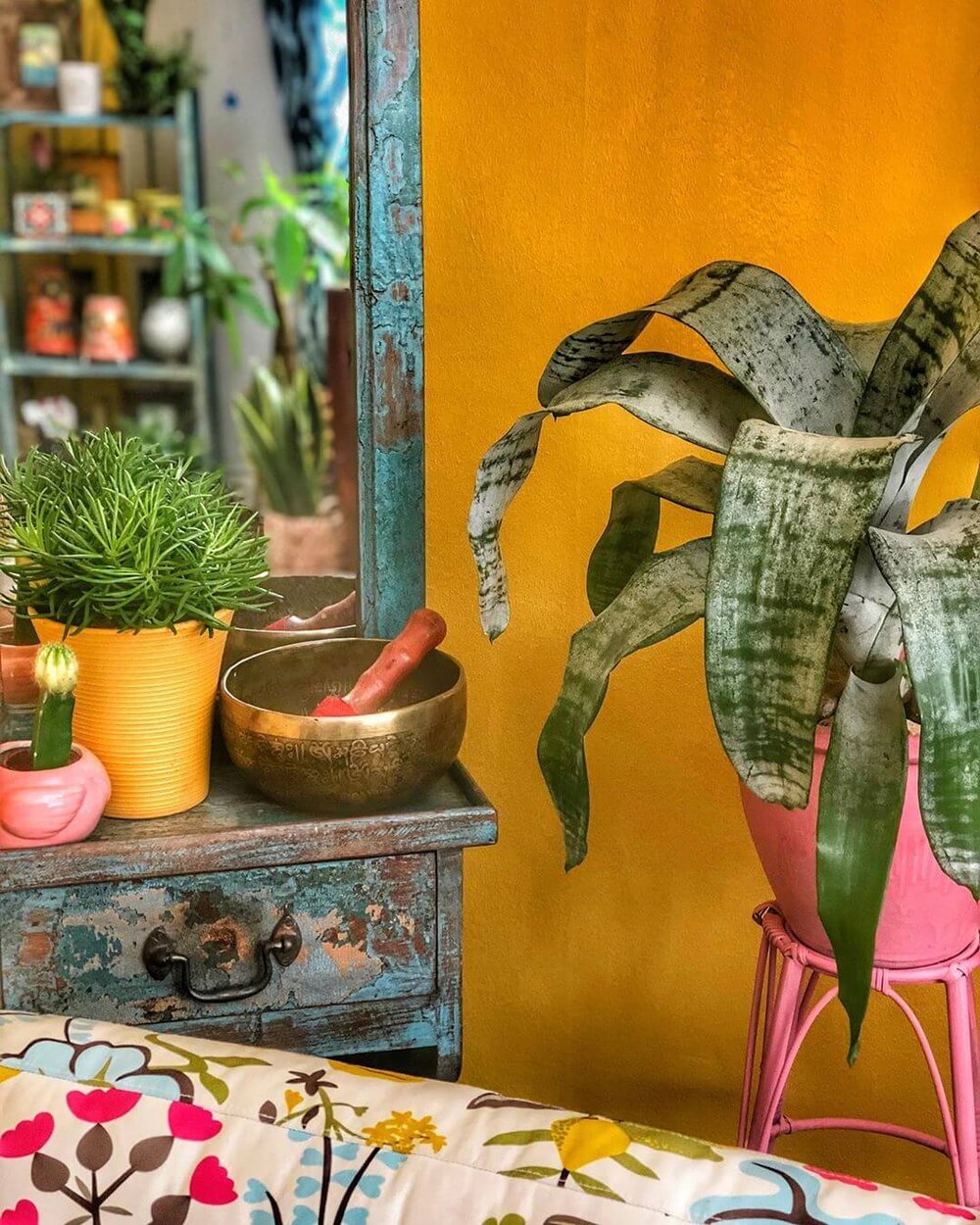
INSTAGRAM/ @ j.o.y.h.o.m.e
Between text messages, emails, various alerts, and the temptation of social media you may find that it’s a bit of a hindrance. So, consider a device that isn’t as “connected” to serve as your audio device.
Tibetan Singing Bowl
$23 at time of publication
Meditation bowls are absolutely stunning for the senses. By either tapping bowls with mallets or running the mallets around the rim of the bowl, you can fill your room with an incredibly rich and soothing sound that instantly relaxes your body.
The Five-Minute Journal
$23 at time of publication
Have a Meditation Journal Ready
Really helpful impulses and answers flood in while in meditation and soon after coming out. It’s really helpful to have a journal handy to jot those thoughts down and come back to them later for guidance and reassurance. Not only are journals excellent for capturing guidance as it comes in, but just drawing whatever comes to mind and extending that mindful energy into the page is incredibly therapeutic.
Hammock Chair with Lights
$70 at time of publication
The primary pieces of meditation room furniture that you’ll want to consider are meditation benches, chairs, and pillows.
Luxury Padded Floor Chair
$62 at time of publication
If you prefer to meditate in the lotus position, a chic meditation floor chair will serve as your key decor element for your meditation room.
How to Decorate a Meditation Room
Meditation Room Colors
If you’re considering a different wall color for your meditation space here’s a quick list of some excellent color options and why you may want to choose one of them.

INSTAGRAM/ @ theinteriorfanatic
Yellow
Your brain reacts differently to certain colors. Yellow colors elicit feelings of fun, excitement, and energy. It can be an excellent color choice for a meditation room or space if you enjoy tapping into your high energy to center yourself. If you do decide to incorporate yellow into your decor consider an accent wall, yellow flowers, or adding yellow meditation pillows to your space.

INSTAGRAM/@ with.love.mia
Blue
Blue colors lower blood pressure, slow respiration, and slow heart-rate which elicits feelings of calmness and serenity. It’s pretty clear why blue colors are so great for a meditation space. Still, make sure not to use a shade of blue that is too dark. Darker shades encourage feelings of depression and sadness. Instead, you’re looking for a nice warm blue hue that is neither stale or depressing.

INSTAGRAM/ @ @thejungalow
Green
Green is also an excellent color for a meditation space because it combines that high-energy fun spirit of yellow with the calming relaxation of blue. As a result, many green hues evoke calmness and relaxation as well.
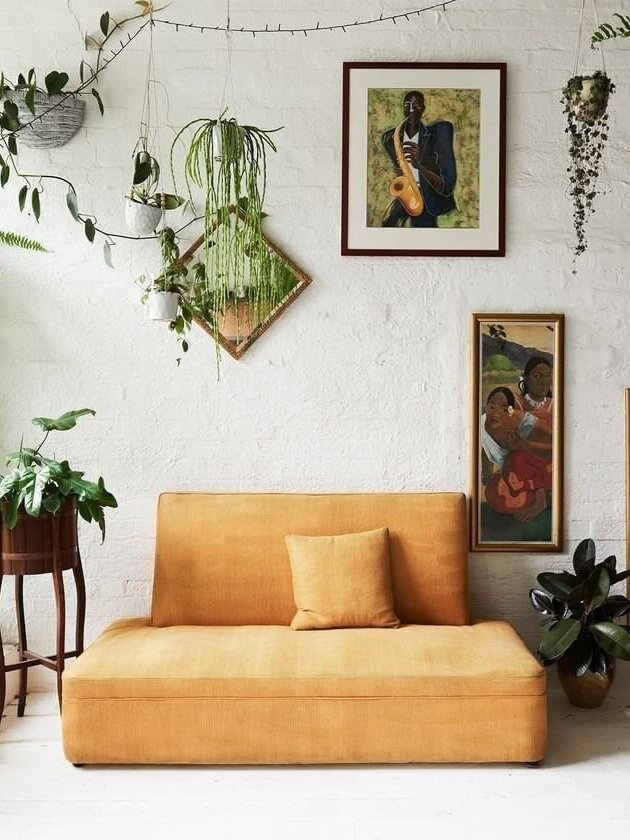
INSTAGRAM/ @ @thedesignfiles
Neutral
Neutral colors are really easy to work with because they’re so versatile and common. Maybe you live in an apartment and do not have the proper permission to change your wall color. Or, perhaps you’re sharing your meditation room with another room. Neutral colors work just fine and you can always accent your space with other colors that match the preferred mood of your meditation space.
Meditation Room Decor
Adding energetically supportive elements to your space will bring your vision together and illustrate your personality. Here are some of the key elements you’ll want to consider adding and why.
Seagrass Woven Wicker Basket
$43 at time of publication
Wood
Wood elements are particularly gorgeous in meditation spaces because they’re grounding and often add a natural fragrance to the room. Wood also symbolizes strength and fertility. You can incorporate wood elements into your space via live trees, figurines, and statues.
Cursive Candlestick
$32 at time of publication
Gold
When it comes to your meditation room, go for the gold. Gold is the expression of vibrant energy and is believed to bring about balance, peace, prosperity, and good fortune.
Snake Plant Zeylanica
$35 at time of publication
Plants
Live plants are integral to a meditation space. Live green plants naturally clean your air, they’re also relaxing and fun, so load up on them.
1Lb Large Amethyst Cluster
$50 at time of publication
Crystals
Crystals can be incorporated into your space based on your specific goals. But, Clear Quartz and Amethyst are both regarded as all purposes healing crystals that are mentally cleansing.
Extra Long Copper Firefly String Lights
$64 at time of publication
Lights
String lights add a romantic and calming affect to your meditation space. And, they’re a decor element that complements any room, if your meditation space is shared with another room.



